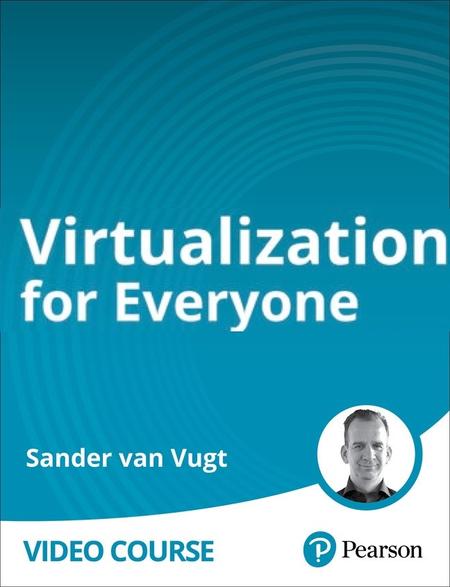
English | MP4 | AVC 1280×720 | AAC 44KHz 2ch | 55 Lessons (2h 53m) | 564 MB
This course is an introduction to virtualization, which helps you to learn and develop new operating systems, no matter what you are running on your laptop/system. It covers what virtualizations are, the different types of virtualizations, and how virtualization is different from containerization and emulation. It covers topics on how to use either VMware Workstation or Fusion, VMware Fusion on MacOS Intel and MacOS ARM, Oracle VirtualBox, and Vagrant.
Included in the course is how to create a Linux virtual machine and a Windows virtual machine. Expert author and trainer Sander van Vugt shows in real-time how to create and set up the virtual machine, so you truly have practice while you learn.
- Learn virtualization options and solutions to run on your own laptop
- Get started on virtualization products to create virtual machines using MacOS, Windows, or Linux using either VMware, VirtualBox, Hyper-V, KVM, or Proxmox
- Get the latest info on advanced virtualization features like snapshots, VM clones, embedded virtualization, encrypted VMs as well as virtualization networks
- Get step-by-step knowledge on how to install and set up a virtual machine
Table of Contents
Introduction
1 Introduction
Lesson 1 Understanding Virtualization
2 Learning objectives
3 Understanding Virtualization
4 Type 1 Hypervisors versus Type 2 Hypervisors
5 Virtualization versus Containerization
6 Virtualization versus Emulation
7 Virtualization Products Overview
Lesson 2 Using VMware Workstation or Fusion
8 Learning objectives
9 Requirements for Using VMware Workstation Fusion
10 VMware Workstation Fusion Features
11 Differences between Player and Pro
Lesson 3 Installation
12 Learning objectives
13 VMware Fusion on MacOS Intel
14 VMware Workstation on Windows
15 VMware Workstation on Linux
16 Upgrading VMware Player to Pro
Lesson 4 Creating Virtual Machines
17 Learning objectives
18 Linux Virtual Machines
19 Windows Virtual Machines
20 VMware Tools
21 Using HostGuest Filesystems
22 Managing VMware Virtual Machine Hardware
Lesson 5 Using Hyper-V on Windows
23 Learning objectives
24 Requirements for Using Hyper-V
25 Running Hyper-V
26 Using Quick Create to Create a Virtual Machine in Hyper-V
27 Creating a Custom Virtual Machine in Hyper-V
Lesson 6 Using Oracle VirtualBox
28 Learning objectives
29 Requirements for Using VirtualBox
30 VirtualBox on Linux
31 VirtualBox on MacOS
32 Creating a Virtual Machine in VirtualBox
33 Managing VirtualBox VM Hardware
Lesson 7 Using Vagrant
34 Learning objectives
35 Understanding Vagrant
36 Vagrant on Windows
37 Vagrant on MacOS
38 Vagrant on Linux
39 Managing Virtual Machines with Vagrant
Lesson 8 Using KVM
40 Learning objectives
41 Requirements for Using KVM
42 KVM on Ubuntu
43 KVM on CentOS Stream
Lesson 9 Other Options for Virtualization
44 Learning objectives
45 The Parallels Desktop
46 VMware ESXi
47 Virtual Machines in Cloud
48 ProxMox
Lesson 10 Advanced Virtualization Features
49 Learning objectives
50 Snapshots
51 VM Clones
52 Nested Virtualization
53 Encrypted VMs
54 Virtual Networks
Summary
55 Summary
Resolve the captcha to access the links!